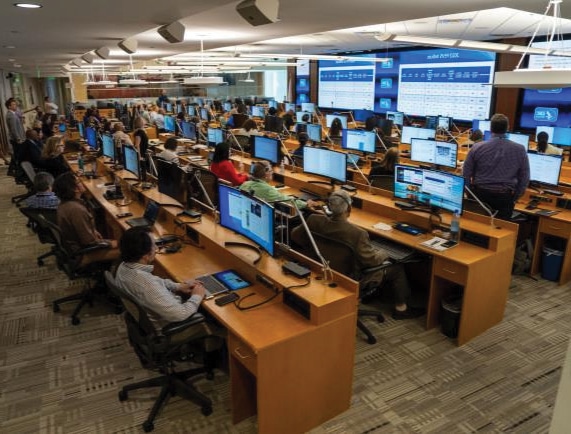Office of Readiness and Response: Division of Emergency Operations
Mission: Integrating public health and emergency management expertise to support preparedness for and response to health threats at home and around the world.
Vision: To be the worldwide leader in public health response and emergency management integration.

Plans, Exercise, and Evaluation Branch
- Develops, writes and coordinates CDC plans for all-hazards responses.
- Designs and conducts preparedness and response exercises.
- Evaluates response operations and exercise activities for improvement in CDC readiness and response capabilities.
- Develops, coordinates, and publishes contingency plans, incident action plans, and situation reports for Incident Management System (IMS) activations.
Resource Support Branch
- Identifies responders and manages cadres, as part of the CDCReady Responder program, and connects responders to response positions during emergencies.
- Provides deployment services: deployer mobilization, emergency travel, equipment and communications, and deployer support.
- Provides support services: emergency transportation, supplemental facility support, and emergency resource requests.
Operations Branch
- Serves as the 24/7 focal point for CDC emergency activities.
- Alerts and informs CDC leadership of evolving public health emergencies and disasters.
- Supports requests for emergency management assistance from across CDC, as well as international, federal, and state/local partners.
- Orchestrates all aspects of CDC’s Emergency Operations Center (EOC) daily operations and IMS response operations.
Emergency Management Training and Capacity Development Branch
- Provides emergency management training and technical assistance to CDC staff and international ministry of health (MoH) partners.
- Conducts the Public Health Emergency Management Fellowship for international MoH leaders.
- Leads training development and delivery efforts to prepare CDC staff for emergency response roles, as part of the CDCReady Responder program.
Administers CDC’s Emergency Management Program.
Improves the agency’s response posture to ensure CDC is ready to effectively respond to public health emergencies via the Graduated Response Framework (GRF) and CDC Ready Responder.
Facilitates well-coordinated, agency-wide responses to emergencies and disasters, such as disease outbreaks and hurricanes.
Coordinates with all CDC Centers, Institute, and Offices (CIOs) in planning, training, exercising, managing, and evaluating pre-response and response activities.
Operates as CDC’s 24/7/365 focal point for coordination and prioritization of resources to support on-scene response operations around the world.
Provides 24/7 deployment support by coordinating domestic and international travel for CDC responders on emergency deployments.
Supports CIOs in the standup, management, transition, and standdown of emergency responses across the levels of the GRF.
Assists countries in establishing Public Health Emergency Management (PHEM) programs through workforce development, systems strengthening, and infrastructure for EOCs.
Liaises with federal and other partners to identify, assess, and respond to suspected or confirmed threats or incidents.